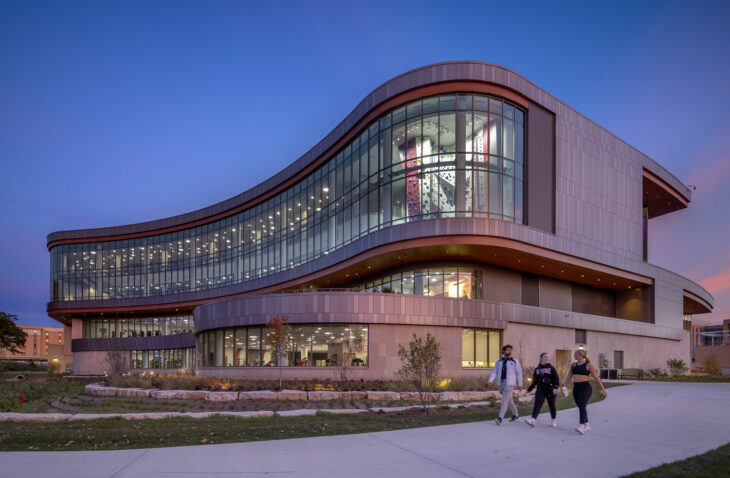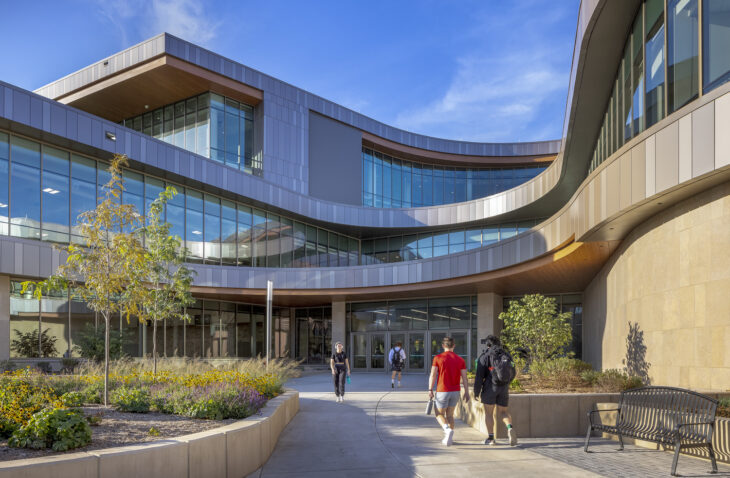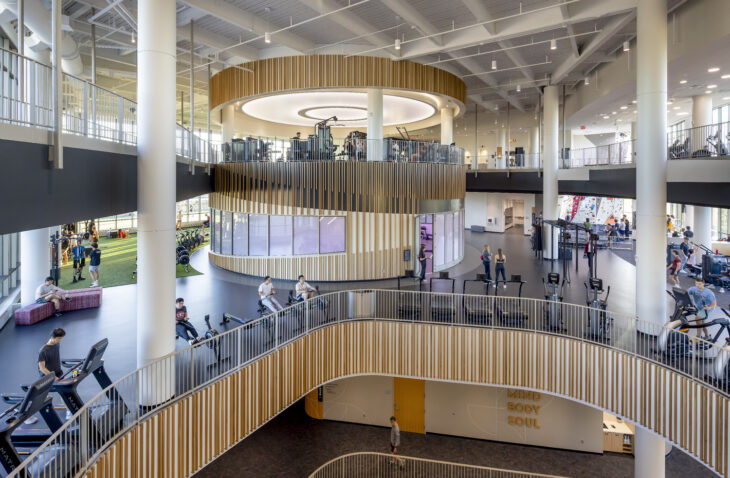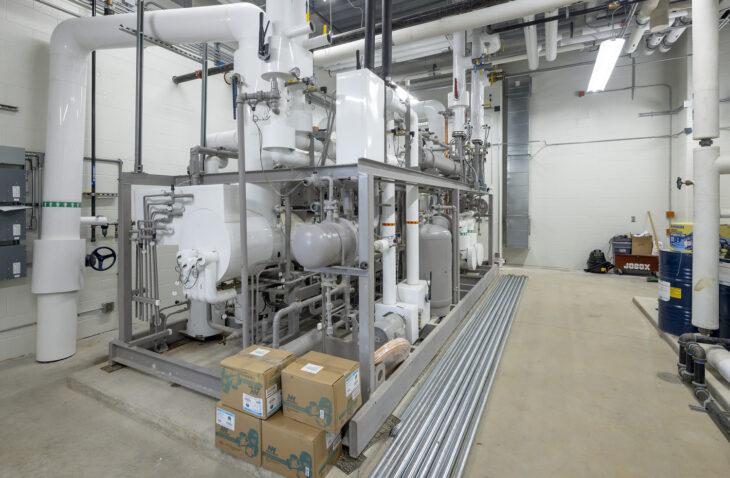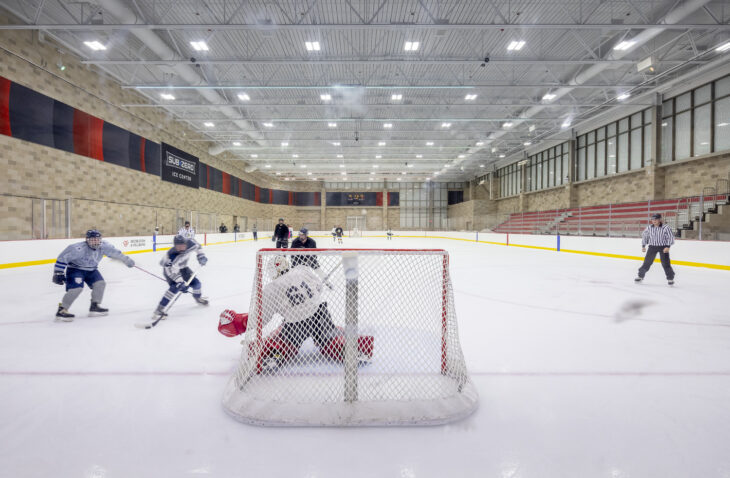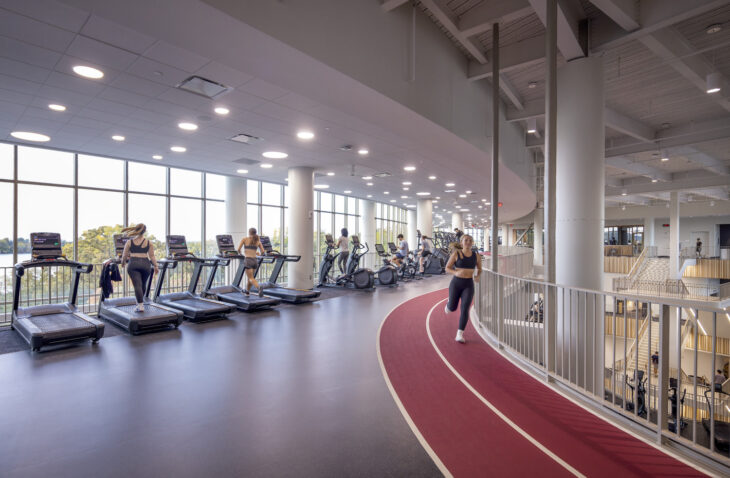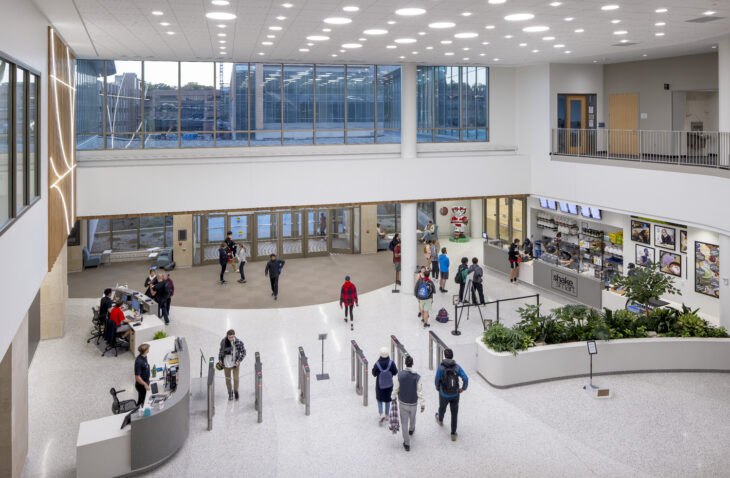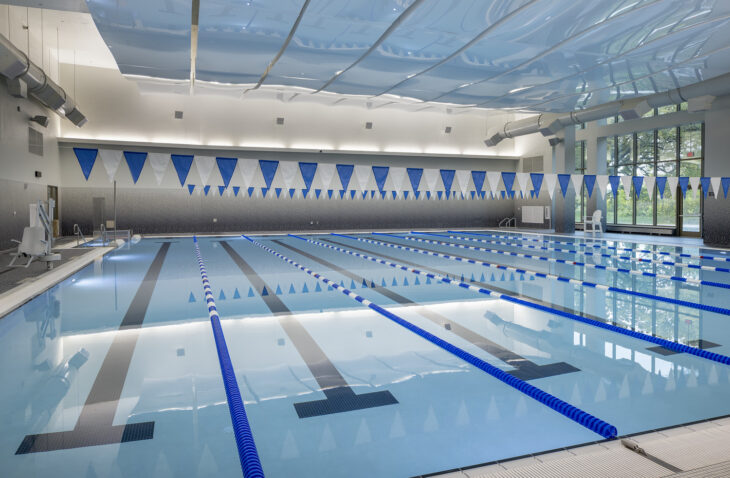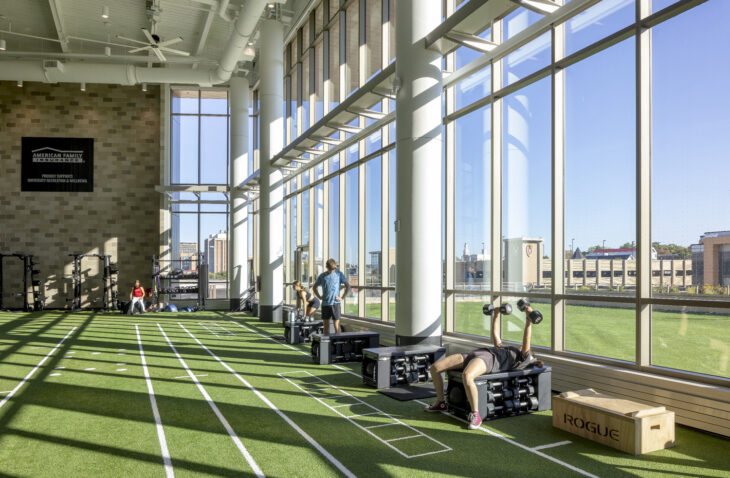New Fitness Complex with Ice Rink and Natatorium
The project: The new Bakke Recreation & Wellbeing Center at the UW Madison campus includes eight multipurpose courts, ice rink with spectator seating, natatorium, indoor track, climbing and bouldering wall, multipurpose studios, indoor jogging track, rooftop fitness area, and sports simulators. In addition to the physical/athletic spaces, Bakke also offers spaces dedicated to support student wellbeing including the Wolf Teaching kitchen, massage therapy rooms, peer wellness coaching, and meditation, as well as the school’s adapted fitness laboratory for the kinesiology program.
The goal: Design a state-of-the-art facility focused on student wellbeing to replace the existing gymnasium/natatorium.
Design approach: A phasing plan was developed to ensure minimal utility outages to adjacent buildings. IMEG designed the extension of site thermal utilities, including chilled water, steam, steam condensate, and compressed air. Direct-buried chilled water was extended from an existing 48” main and direct-buried steam, condensate, and compressed air was extended from an existing steam pit.
Design highlight: The Sub-Zero ice rink will be home to the university’s intramural hockey program and will also host local youth teams. IMEG provided full ice system design services including design of the ice rink chiller, refrigerated slab, sub soil heating system, and dehumidification system.
Challenge: Meet the project’s sustainability goals wherever possible. Solution: IMEG designed the ice rink chiller to include multiple forms of heat recovery including rejecting heat to the subsoil heating system, Zamboni snow melt pit, and the natatorium pool heaters. Additional sustainability features include high-efficiency variable air volume (VAV) systems, air-to-air heat recovery systems, and demand control ventilation.
Challenge: Prevent the proliferation of odors from the hockey equipment (a problem at the old facility’s locker room). Solution: IMEG designed a locker “bake-out” dehumidification system to heat and dry the equipment in the lockers overnight.
The outcome: The facility is accessible for all users and provides a hub for the university’s wellbeing services.








